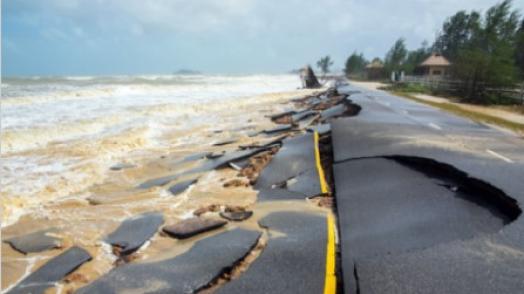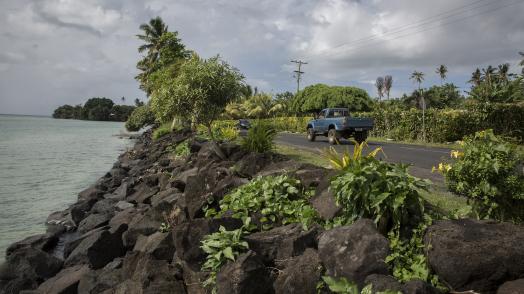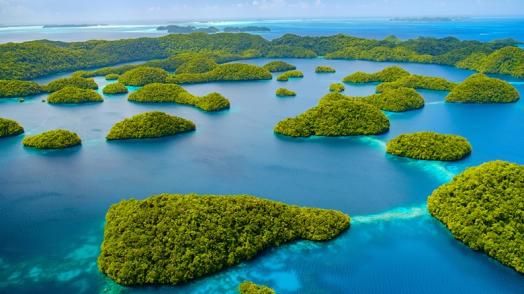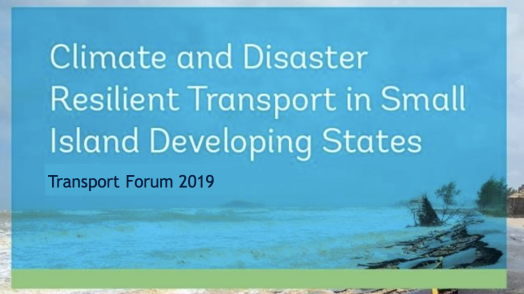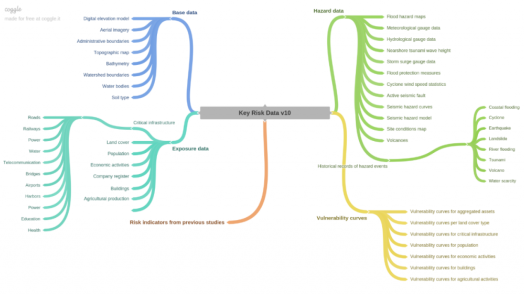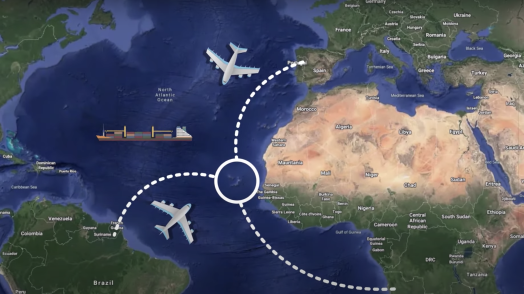The Resilient Transport in Small Island Developing States (RT SIDS) Program aims to strengthen the capacity of SIDS to enhance the climate and disaster resilience of transport systems. RT SIDS is financed by the Japan-World Bank Program for Mainstreaming Disaster Risk Management in Developing Countries of the GFDRR.
Small Island Developing States (SIDS) are among the most exposed and vulnerable countries to disasters and climate change risk. In spite to its high exposure to natural hazards, SIDS have at their disposal several options to enhance resilience, including strengthening their transport asset management systems, a measure that has been found to significantly reduce asset and well-being losses due impacts from disasters and climate change.
The specific objectives of the RT SIDS Program are to:
1. Provide technical and scientific evidence of why it is crucial and makes sense to support SIDS in enhancing climate and disaster resilience of transport systems
2. Develop an integrated approach to enhance climate and disaster resilience of transport systems and broaden understanding of best practices and practical solutions to improve transport asset management practices and systems in SIDS
3. Improve capacity in SIDS through technical assistance, training, and access to financial resources to integrate climate and disaster risks considerations in transport asset management systems
4. Mobilize development and finance communities to scale up climate and disaster resilience best practices in the transport sector in SIDS
RT SIDS Program was delivered in three phases. Phase 1, completed in 2017, addressed the urgent need to enhance the climate resilience of the transport sector in SIDS and proposed a holistic framework to integrate climate resilience considerations systematically into transport asset infrastructure lifecycles. Phase 2 implemented the resilient transport framework across four selected countries: Vanuatu and Solomon Islands in the Pacific, Cape Verde in Africa, and Saint Vincent and the Grenadines in the Caribbean. Phase 3 promoted knowledge sharing through an online training course and a knowledge platform (i-Knowledge) to disseminate materials online for easy access of client countries and partners.
SIDS are already piloting best practices with the support of the World Bank, and further international cooperation is required to scale up climate resilient transport systems.
Highlights
Small Island Developing States (SIDS) are among the most exposed and vulnerable countries to disasters and climate changes. SIDS are particularly vulnerable due to high exposure, isolated geography, small size of economies, and reliance on sectors like tourism and fisheries, that in turn rely on vulnerable ecosystems.
The exposure of SIDS to disasters and climate change leads to significant economic losses. The transport sector can be highly vulnerable to the impacts of climate change, generating high asset- and well-being losses when damaged. Transport is often the most impacted infrastructure sector by extreme weather events like flooding and landslides, with damage representing a large percentage of total infrastructure damage costs.
Although SIDS are highly exposed to natural hazards and climate change, and the transport sector suffers significant damages and costs, it is possible to reduce asset vulnerability and losses through improved asset management systems. SIDS have at their disposal several options to enhance resilience. Resilient transport measures, like proper road maintenance practices and the improvement of road design standards, have been estimated to reduce the impacts of natural disasters on asset losses by 8.8-24 percent, and in turn reduce losses on population well-being by 13-25 percent.
The World Bank has been working with SIDS in the last decade to enhance the resilience of its transport sectors toward meeting the sector development goals which are: (i) Resilient Infrastructure; (ii) Sustainable Financing; and (iii) Capable Institutions both process and system-wise as well as human resources. In addition to the funding provided under investment programs, the World Bank partnered with the Government of Japan, through the Global Facility for Disaster Reduction and Recovery (GFDRR), to provide technical assistance to SIDS.
Saint Vincent and the Grenadines (SVG) is located in the Caribbean region. SVG is volcanic island, has a highly mountainous territory and limited flat land. More than 90% of the infrastructure lies on the narrow coastal belt less than eight meters above sea-level. The main natural hazards are river flash flooding and landslides, followed by seasonal hurricanes, coastal flooding due to storm surges and sea-level rise.
The World Bank supported SVG with the development of a diagnostic of road and bridge asset management system and how it currently integrates climate and disaster risk considerations, identifying opportunities for enhancement and providing recommendations to strengthen institutional capacity and coordination.
Vanuatu is a SIDS located in the Pacific region. Vanuatu is one of the most vulnerable countries in the world to climate change and natural disaster risks. The island nation suffers from cyclones, drought, extreme precipitation and flooding, and subsequent landslides.
Road infrastructure in Vanuatu is inadequately maintained and in need of both rehabilitation and more routine maintenance. The World Bank is supporting the Ministry of Infrastructure and Public Utilities (MIPU) to establish a climate and disaster resilient road asset management system. Based on a robust diagnostic exercise conducted under RTSIDS, the World Bank is working with MIPU to introduce key elements that allow MIPU to integrate climate and disaster risk considerations into road planning, investment prioritization, and operations.
The Solomon Islands is the Pacific’s largest archipelagic nation, extending some 1,500 km from east to west and consisting of nearly 1,000 islands. The road network in the Solomon Islands is made up of approximately 1,500 km of roads. Solomon Islands faces severe challenges in investing and maintaining its road networks against the increasing threats imposed by climate change. Flooding, coastal erosion, landslides, cyclones are among the most damaging hazards to the road network in the country.
The World Bank is working with the Government of Solomon Islands to build climate and disaster resilience into the road asset management system. The World Bank supported the Government of Solomon Islands to develop a Resilient Road Asset Management Policy Framework, which details key policies and operational guidelines to make asset management and resilience building at the core of MID’s daily operations.
Cape Verde is a cluster of islands in the Mid-Atlantic. Due to its strategic location, Cape Verde’s Government has endorsed a national strategy to become a trade HUB in the Mid-Atlantic. To accomplish this goal, the country needs to ensure its transport assets to operate with high levels of reliability and efficiency. Hence, a comprehensive approach has been designed to better understand the potential impacts of natural hazards on Cape Verde’s transport assets.
The World Bank modelled the supply chain feeding Cape Verde’s markets through its ports and airports as well as how natural phenomena (e.g., tropical cyclones, volcanic eruptions, sandstorms) can potentially impact the operation of national ports and airports. To address the complexity of investment decision-making in constrained financing environments, a series game simulation was designed to simulate stakeholders’ priorities and therefore help building consensus.

